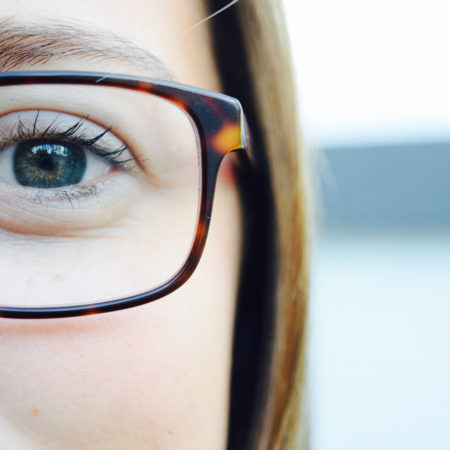The human eye is extremely delicate. Even the slightest disturbance or obstruction can cause irritation, pain, or loss of vision. Plus, we rely on our eyesight to get to work in the morning, communicate with our loved ones, and binge-watch sci-fi series. It’s no surprise that our immediate reaction is to protect our eyes or close them altogether when walking through a windstorm, an extra branch-y forest, or diving underwater.
Aside from the elements and foreign objects, our eyes are susceptible to a number of diseases and other ailments. Pink Eye is perhaps the most well-known, and most feared of them all, thanks to its depiction in popular culture. But it’s also one of the most common eye infections.
Think you have Pink Eye or any other kind of eye infection? Don’t wait around – early detection is key. Book an eye exam with Dr. Sharma: book online today!
What is Pink Eye? (AKA Conjunctivitis)
Pink Eye, less commonly known by its medical name of conjunctivitis, is an eye infection common in both children and adults. When you have Pink Eye, the transparent area of the membrane that lines your eyelid will become infected and inflamed.
Pink eye can certainly be irritating, but the good news is that it does not affect vision. On top of that, there are several treatments including eye drops, ointments, pills and flushes available to help with that discomfort.
Pink Eye Causes
Pink Eye is very contagious and can spread from person to person. For that reason, careful precautions should be taken when infected with Pink Eye or around someone with the infection. Definitely avoid touching your eyes, and practice frequent handwashing (with warm, soapy water!).
The most common source of Pink Eye are viruses such as the common cold or even COVID-19. Bacteria is another common source, which can be found in many places including food, feces, dirt, and more. Pink Eye can also be caused by sexually transmitted infections, common allergens like pollen or mould, and even products like shampoo, makeup, and pool chlorine.
How is Pink Eye Spread?
Pink Eye is spread like many other common viral or bacterial infections. Person-to-person transmission is very common, which could mean a handshake, a hug or a kiss. It’s also possible to pass the infection with a cough or sneeze. It’s even possible to pick up Pink Eye off a surface – some viruses can live for months on a surface. This includes pillows, towels, makeup brushes, and even contact lenses.
As a general rule of thumb, to avoid contracting Pink Eye, always avoid touching your eyes unless you’ve just washed your hands.
How to Tell You Have Pink Eye
Pink Eye symptoms can begin to appear 24-72 hours after the original infection, the most obvious symptom being a change in colour of the white part of your eye. Also called the sclera, the white part of your eye will begin to appear pink, because of the inflamed blood vessels in your eye.
It’s important to note that a pink colour eye doesn’t always mean Pink Eye. In children, this can happen when a tear duct is blocked. It can also happen quite commonly after swimming in a chlorine-soaked public swimming pool.
If you have a pink eye, you’ll want to watch for more symptoms to confirm a case of actual Pink Eye. The main one is itchiness. Also, if your eyes become extra watery or extra sensitive to bright lights, that’s a strong sign. You’ll also want to watch for irritation – a feeling like something is stuck in your eye.
If you’re experiencing Pink Eye symptoms or are unsure, don’t hesitate or wait around – early detection is vital. Book an eye exam with Dr. Sharma by giving our office a call at (250)-920-0755, or easily book online today!
